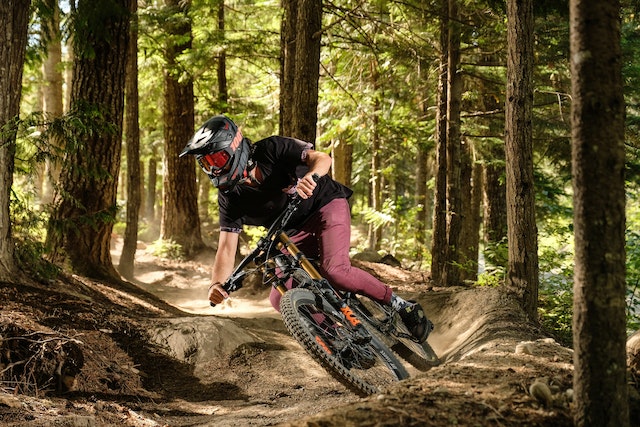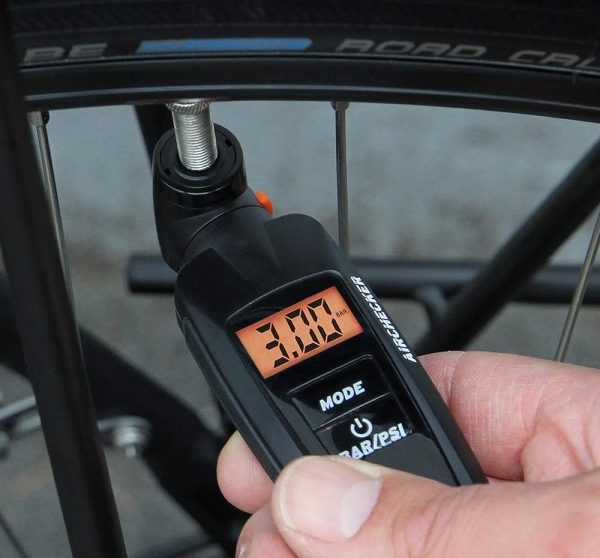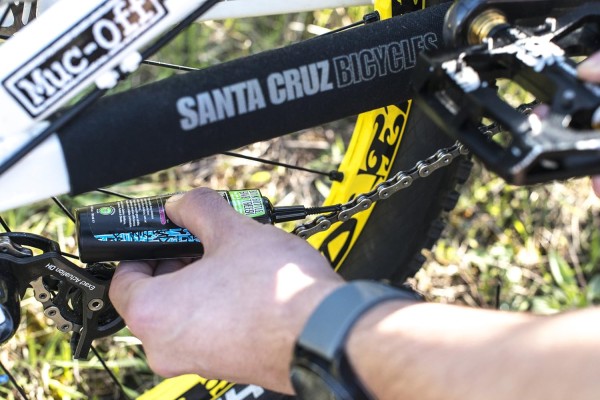Are you ready to embark on epic mountain adventures, conquering rugged terrains and seeking thrilling adrenaline rushes? If so, you’ll need a good mountain bike to accompany you on your quest for excitement. But here’s the catch – finding the perfect bike can be a daunting task. With countless options available, you might wonder, ‘How much does a good mountain bike cost?’
Well, hold on to your handlebars because we’re about to take you on a wild ride through the world of mountain bike prices. From high-flying hyperbolic prices that will make your jaw drop to budget-friendly options that won’t break the bank, we’ll explore the factors that affect the cost of mountain bikes.
So, whether you’re a seasoned rider or a newbie looking to join the mountain biking community, sit tight and discover the perfect ride that will make you feel like you truly belong in this exhilarating world.

1. Factors Affecting the Cost of Mountain Bikes
When considering the factors that impact the cost of mountain bikes, it’s like peeling back the layers of an onion to reveal the inner workings of their pricing. It’s not just about the brand or the materials used, but a combination of multiple factors that determine the final price tag.
One of the main factors influencing the cost is the bike’s frame material. High-end mountain bikes often use carbon fiber frames, which offer superior strength and lightness, but also come with a higher price tag. On the other hand, aluminum frames are more affordable while still providing good performance.
Another factor to consider is the bike’s components. Premium components from well-known brands like Shimano or SRAM can significantly increase the cost. Suspension is also a key factor influencing the price, with full-suspension bikes generally being more expensive than hardtails. Additionally, the level of technology and innovation incorporated into the bike, such as advanced suspension systems or electronic shifting, can also drive up the cost.
Finally, the bike’s intended use and intended level of performance can impact the price. High-performance bikes designed for professional athletes or extreme riding conditions will naturally be more expensive.
Overall, the cost of a good mountain bike can range from a few hundred dollars to several thousand, depending on these various factors.
2. Frame Materials and Construction
To get a high-quality mountain bike, you’ll want to consider the materials and construction of the frame. The frame is the backbone of the bike, and it plays a crucial role in determining its performance and durability.
Here are three key factors to consider when it comes to frame materials and construction:
- Aluminum: This is the most common material used in mountain bike frames. It offers a great balance of strength, weight, and cost. Aluminum frames are lightweight, stiff, and responsive, making them ideal for aggressive riding and technical trails. They also tend to be more affordable compared to other materials.
- Carbon Fiber: Carbon fiber frames are known for their lightness and strength. They can absorb vibrations and provide a smoother ride. Carbon frames are often found on high-end mountain bikes and are favored by professional riders who prioritize performance. However, they can be more expensive than aluminum frames.
- Steel: Steel frames are renowned for their durability and ability to handle rough terrain. They offer a comfortable and forgiving ride, absorbing shocks effectively. While steel frames may be heavier than aluminum or carbon frames, they are known for their longevity and can be a great option for riders seeking a bike that will last for years.
Considering these factors will help you find a mountain bike frame that suits your needs and budget, ensuring you can hit the trails with confidence and enjoy the sense of belonging that comes with being part of the mountain biking community.
3. Components and Technology
One awesome thing about mountain biking is the constant evolution of components and technology, which keeps riders on the cutting edge of performance and innovation. Whether you’re a beginner or an experienced rider, having the right components on your mountain bike can greatly enhance your riding experience. From the frame and suspension to the brakes and drivetrain, each component plays a crucial role in the overall performance of the bike.
To give you an idea of the different components and technologies available, here’s a table showcasing some popular options:
| Component | Description |
|---|---|
| Suspension | Helps absorb shocks and bumps for a smoother ride |
| Brakes | Provides reliable stopping power in various conditions |
| Drivetrain | Transfers power from your pedals to the wheels efficiently |
| Wheels | Determines the bike’s stability, grip, and overall ride quality |
| Handlebars | Offers control and maneuverability |
When it comes to pricing, mountain bike components and technology can vary greatly. Entry-level mountain bikes typically start around $500, while high-end models can cost several thousand dollars. The price difference is often due to the quality of materials, level of performance, and advanced technologies incorporated into the bike.
Investing in a good mountain bike with quality components will not only enhance your performance and enjoyment on the trails but also ensure a safer and more reliable ride. So, when considering the cost, remember that a higher price often reflects the added benefits of improved technology and performance.
4. Suspension Systems and Performance
The suspension systems in modern mountain bikes are like magic carpets, effortlessly gliding over rocks and roots as if they were mere whispers beneath the tires. They provide an unparalleled level of comfort and control, allowing you to tackle rough terrains with ease and confidence.
Whether you’re a beginner or an experienced rider, having a good suspension system on your mountain bike is essential for a smooth and enjoyable ride.
When it comes to suspension systems, there are two main types to consider: front suspension and full suspension. Front suspension, also known as a hardtail, features a suspension fork in the front that absorbs impacts from the front wheel. This type of suspension is ideal for cross-country riding and offers a good balance between efficiency and comfort.
On the other hand, full suspension bikes have both front and rear suspension, offering even greater comfort and control on rough terrain. These bikes are perfect for downhill riding and more aggressive trails.
The performance of a suspension system is determined by various factors, including the quality of the components and the design of the bike frame. Higher-end mountain bikes often feature advanced suspension systems with adjustable settings, allowing you to fine-tune the performance according to your preferences and the terrain you’re riding on.
Investing in a mountain bike with a good suspension system is crucial for a pleasurable riding experience. While prices can vary significantly, a decent mountain bike with a reliable suspension system can start around $1,000 and go up to $5,000 or more for top-of-the-line models.
It’s important to consider your budget and riding style when choosing a mountain bike, but remember that a good suspension system is worth the investment for a smoother and more enjoyable ride. So go ahead, join the community of mountain bikers and experience the thrill of conquering trails with ease and style.
5. Budget-Friendly Mountain Bike Options
Affordable mountain bikes can be a gateway to thrilling adventures on rugged trails, offering a budget-friendly option for riders who crave the excitement of off-road cycling. If you’re looking for a mountain bike that won’t break the bank, there are several options available that provide great value for the price.
Here are two budget-friendly mountain bikes that can help you embark on your off-road journey:
- Brand A: This mountain bike offers a durable frame and reliable components, making it a solid choice for beginners. With its responsive suspension system, you can tackle rough terrains with ease. Plus, its lightweight design ensures a smooth and agile ride, allowing you to navigate tight corners effortlessly.
- Brand B: Known for its quality craftsmanship, this mountain bike brand provides excellent performance at an affordable price. Equipped with a reliable drivetrain and sturdy brakes, it ensures a safe and enjoyable ride. Its adjustable suspension system allows you to customize the bike’s performance based on your preferences and the trail conditions.
Both of these budget-friendly mountain bikes deliver a satisfying off-road experience without emptying your wallet. No matter which brand you choose, you’ll be joining a community of like-minded riders who share your passion for adventure and the great outdoors. So, grab your bike and get ready to explore the thrilling world of mountain biking!
Frequently Asked Questions
Are there any additional costs associated with owning a mountain bike, such as maintenance or upgrades?
Yes, there are additional costs associated with owning a mountain bike, such as regular maintenance to keep it in good condition and potential upgrades to enhance your riding experience.
Can I use a mountain bike for other types of riding, such as commuting or road biking?
Sure, a mountain bike can be versatile beyond just off-road riding. It’s like having a Swiss army knife on wheels, allowing you to commute or hit the road. It’s a great way to feel connected and belong to different riding communities.
How often should I replace certain components of a mountain bike, such as the tires or brakes?
You should replace certain components of your mountain bike based on wear and tear. Tires and brakes should be replaced when they are worn out or no longer provide sufficient performance.
Are there any specific brands or models of mountain bikes that are known for their durability and long lifespan?
There are several mountain bike brands known for their durability and long lifespan. Some popular ones include Trek, Specialized, and Santa Cruz. These brands offer quality bikes that can handle tough terrain and last for many years.
How does the weight of a mountain bike affect its performance and price?
When it comes to the weight of a mountain bike, it can greatly impact both its performance and price. Lighter bikes tend to be more expensive and offer better performance, while heavier bikes are more affordable but may not perform as well.
Conclusion
From the materials used in the frame to the advanced technology and suspension systems, each component plays a role in determining the price. However, don’t worry if you’re on a budget! There are plenty of affordable options available that still offer great performance and durability. Just remember, finding the perfect mountain bike is like finding a hidden trail in the woods – it may take some exploring, but the experience is worth it.





